In compact living spaces, integrating both a TV viewing area and a dining spot requires thoughtful planning and multifunctional furniture. Key strategies include zoning the room with rugs or lighting, choosing pieces that serve dual purposes—like a bench that doubles as seating and storage—and maximizing vertical space with wall-mounted tables or shelves. Transparent materials and reflective surfaces reduce visual clutter, while cohesive color schemes unify disparate zones. Foldable and modular elements allow flexibility for entertaining or daily use, and strategic placement of consoles or bar carts can serve multiple roles. The following 20 ideas demonstrate how to combine a TV and dining table stylishly and efficiently in a small living room.
1. Modular Sectional with Built-In Table
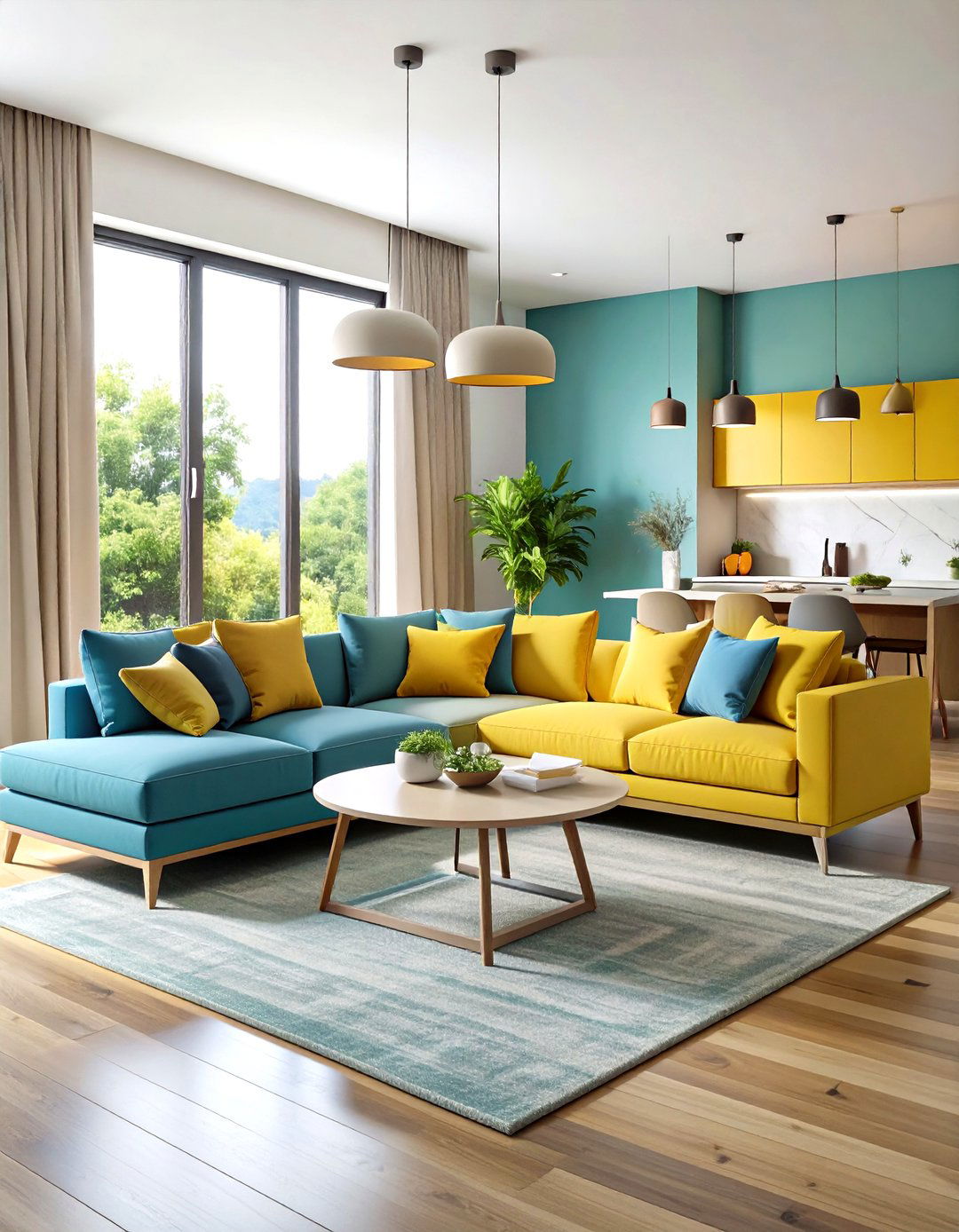
A modular sectional sofa can include a built-in dining table extension that tucks away when not in use, offering both lounging and eating functionality in one piece. By selecting modules that clip together, you can reconfigure the seating and table arrangement based on the occasion, whether it’s a casual meal or a movie night. This approach ensures no additional floor space is needed for a separate dining table, and the unified design maintains a tidy, cohesive look throughout the living area.
2. Wall-Mounted Fold-Down Dining Table
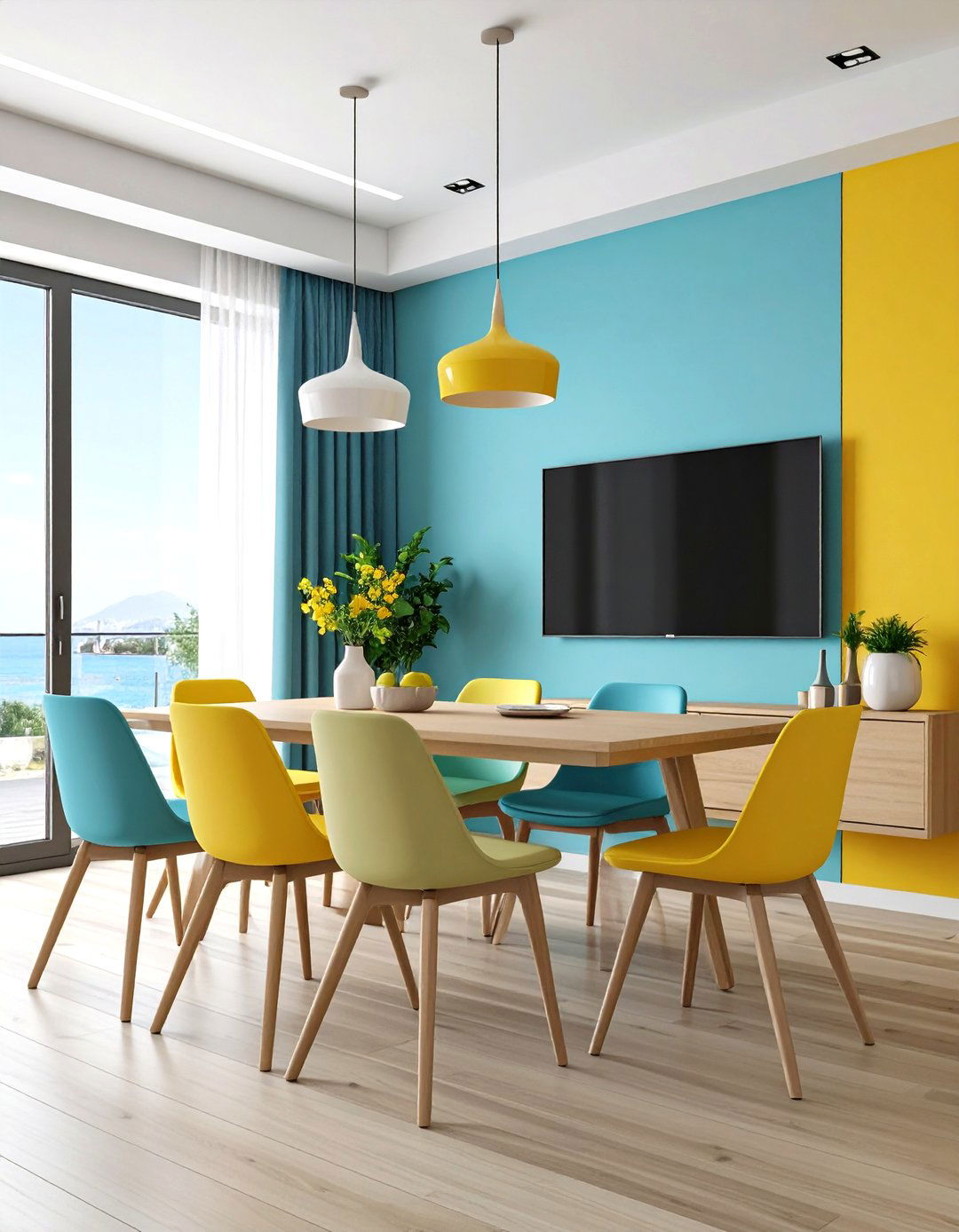
A wall-mounted, fold-down dining table creates an instant eating area without claiming permanent floor space. During mealtimes, simply lower the tabletop and pair it with slim folding chairs; when finished, fold it up to reveal more space for circulation or additional living room seating. Installing the TV on an adjacent wall or above the fold-down table maximizes wall real estate and keeps the focal points organized, ensuring both dining and viewing zones remain distinct yet harmonious.
3. Built-In Media Console with Dining Shelf
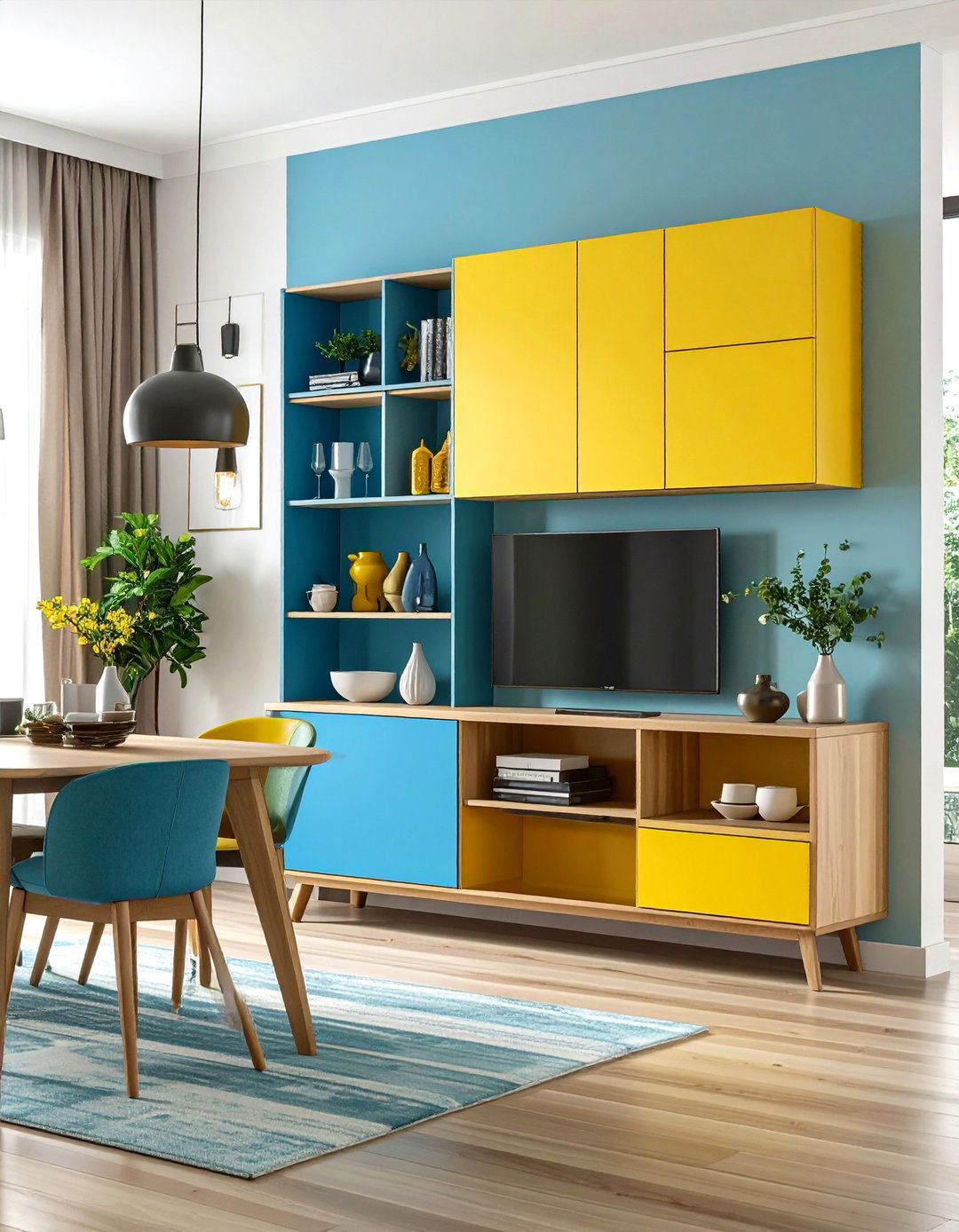
Custom-built media consoles can incorporate a pull-out or retractable dining shelf, offering a seamless blend of entertainment and dining. When the shelf is extended, it provides ample tabletop space for meals or work, and when retracted, it aligns flush with the console facade, maintaining clean sightlines to the TV. Integrating cabinets below also maximizes storage for dinnerware, gaming consoles, and accessories, reducing the need for extra furniture pieces.
4. Corner Banquette Seating

Corner banquette seating transforms an underutilized nook into a cozy dining zone that flows into the living area. By installing an L-shaped bench in the corner, you create dedicated seating around a small round or square table, while the rest of the floor plan accommodates a TV-facing sofa. Upholstered benches with hidden storage underneath provide extra space for blankets, board games, or seasonal decor, keeping the room clutter-free.
5. Mobile Bar Cart as Dining Surface
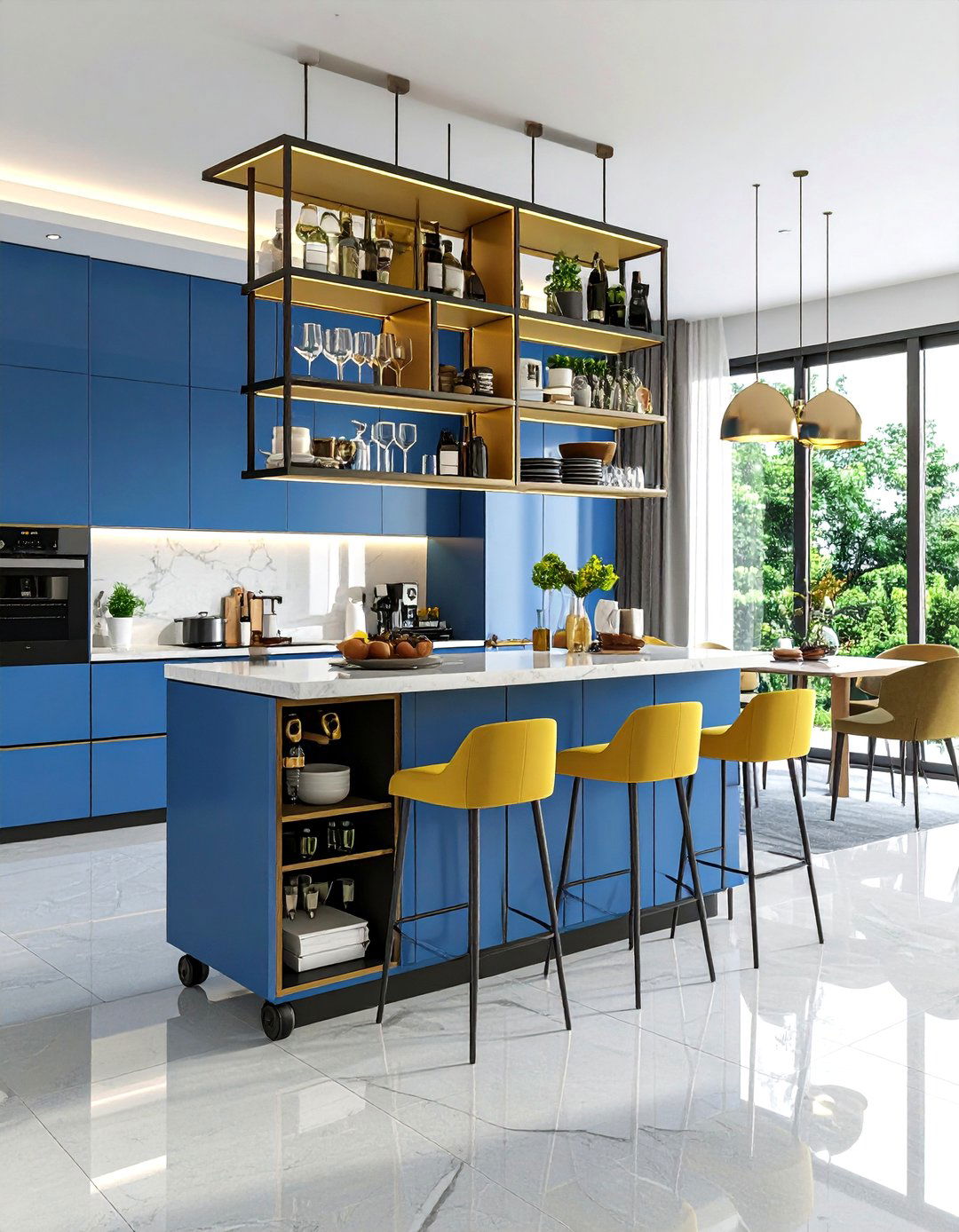
A versatile bar cart can double as a mobile dining table, ideal for impromptu meals or serving snacks during a movie. Simply roll the cart to the sofa edge or beside a couple of stools to create a casual dining spot, then stow it away against a wall when the cart isn’t in use. Opt for a cart with multiple tiers to organize dinnerware, glassware, and even a small TV remote caddy, consolidating functions in one piece.
6. Console Table Behind the Sofa
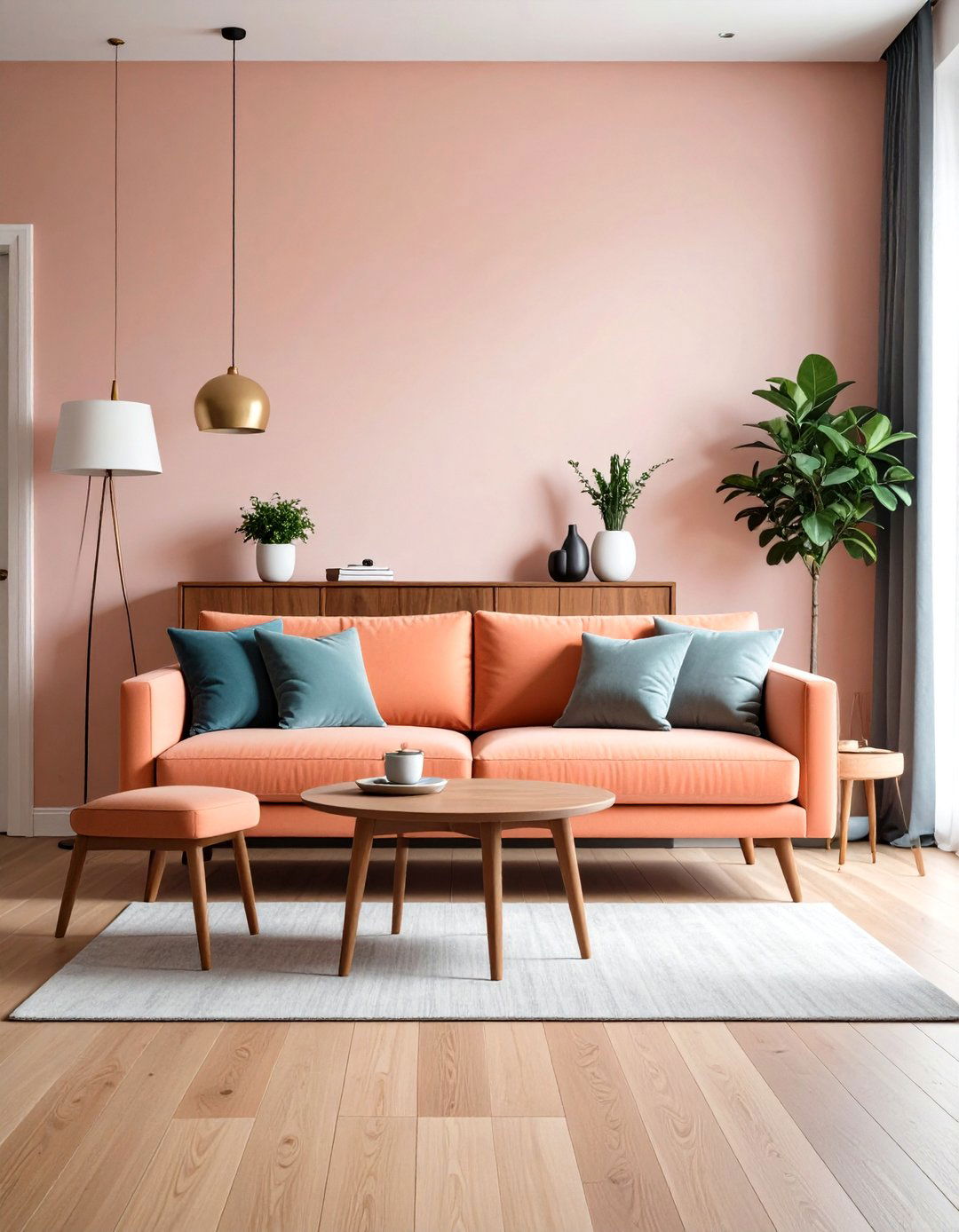
Placing a narrow console table behind the sofa not only defines the living zone but also extends into a compact dining surface when needed. Outfit the console with stools or armless chairs that slide fully underneath, and position it parallel to the TV for an effortless dining experience. The console’s top can host appetizers or a laptop, and its lower shelf stores baskets for dining linens or media accessories.
7. Area Rugs to Define Dining and TV Zones

Using two distinct area rugs helps delineate the dining area from the TV lounge, visually organizing each function without walls. Choose rugs with complementary patterns or textures—such as a flatweave jute under the dining table and a plush shag in the seating area—to anchor each zone. The rugs also absorb sound, improving acoustics for movie watching and conversation during meals.
8. Mirrored Accent Wall for Depth
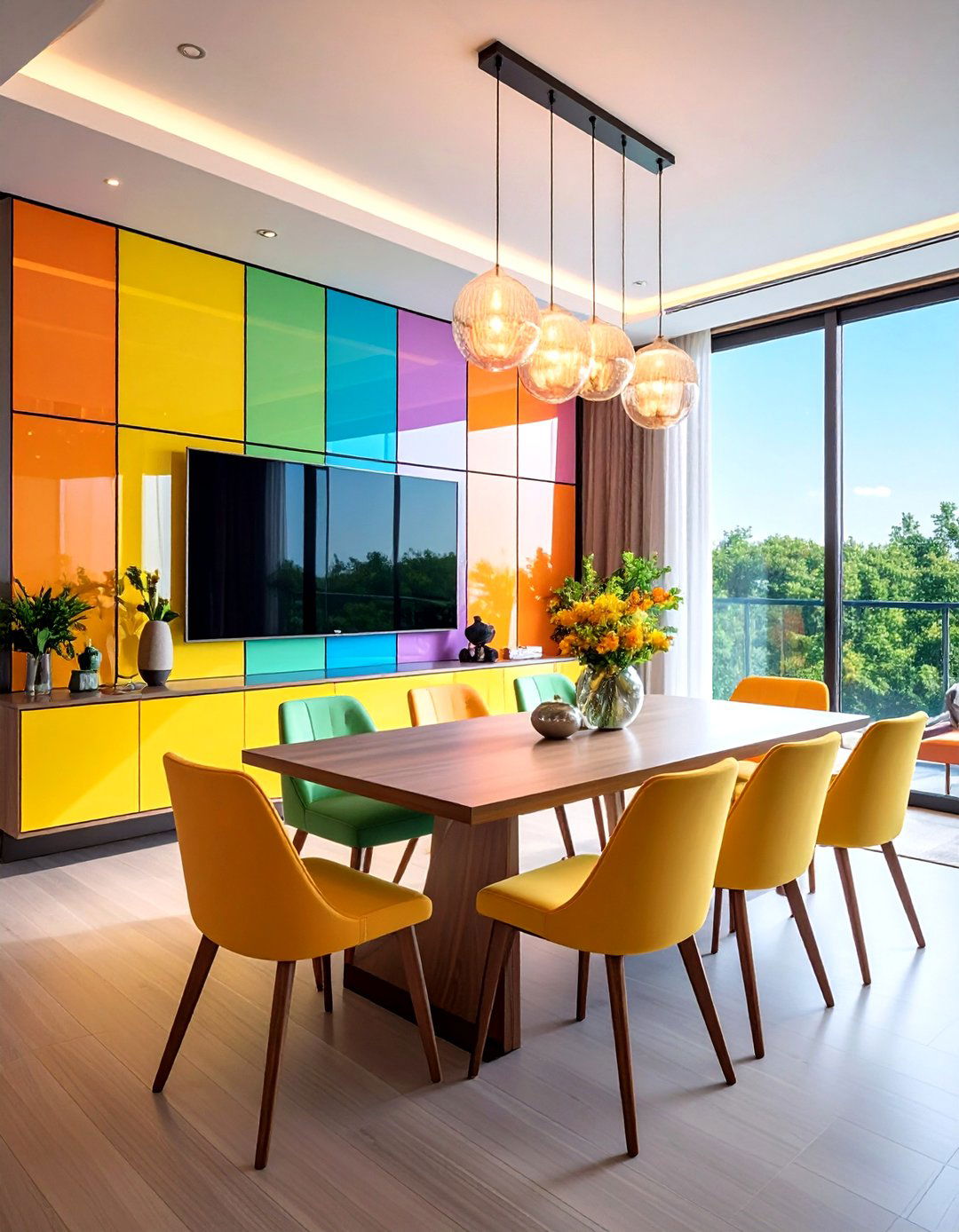
A mirrored accent wall behind the TV or dining table reflects light and creates the illusion of a larger room. Position the mirror to optimize both natural light and reflections of the dining space, making the entire area feel more open and connected. Pair it with minimal frames or flush installations to avoid breaking the expanse, preserving a sleek, modern aesthetic.
9. Glass or Acrylic Dining Table
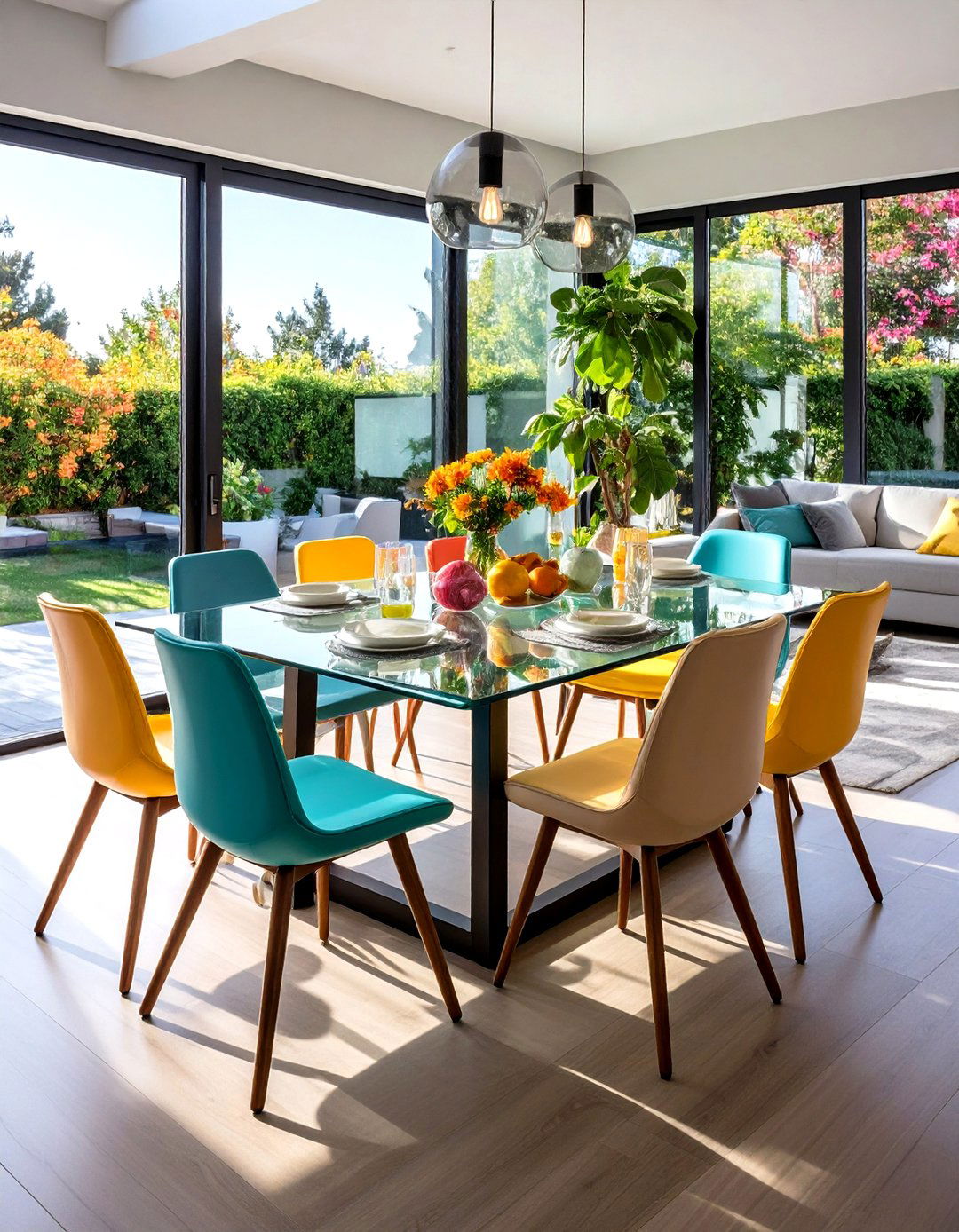
A glass or acrylic dining table maintains unobstructed sightlines across the room, preventing visual barriers between the TV and eating area. The transparency of the table surface allows light to pass through, reducing the sense of bulk in a small footprint. To balance the look, choose seating with slender legs or clear frames, ensuring the dining set feels airy rather than heavy.
10. Slim Profile TV Stand with Hidden Storage

Opt for a low-profile TV stand with integrated drawers or cabinets to conceal dining essentials when not in use. This piece serves media components and also stashes placemats, dishware, and table linens in an organized manner. The compact design keeps the TV at eye level and leaves floor space open for a foldable dining table or bench storage below.
11. Nesting Tables as Flexible Dining Surfaces
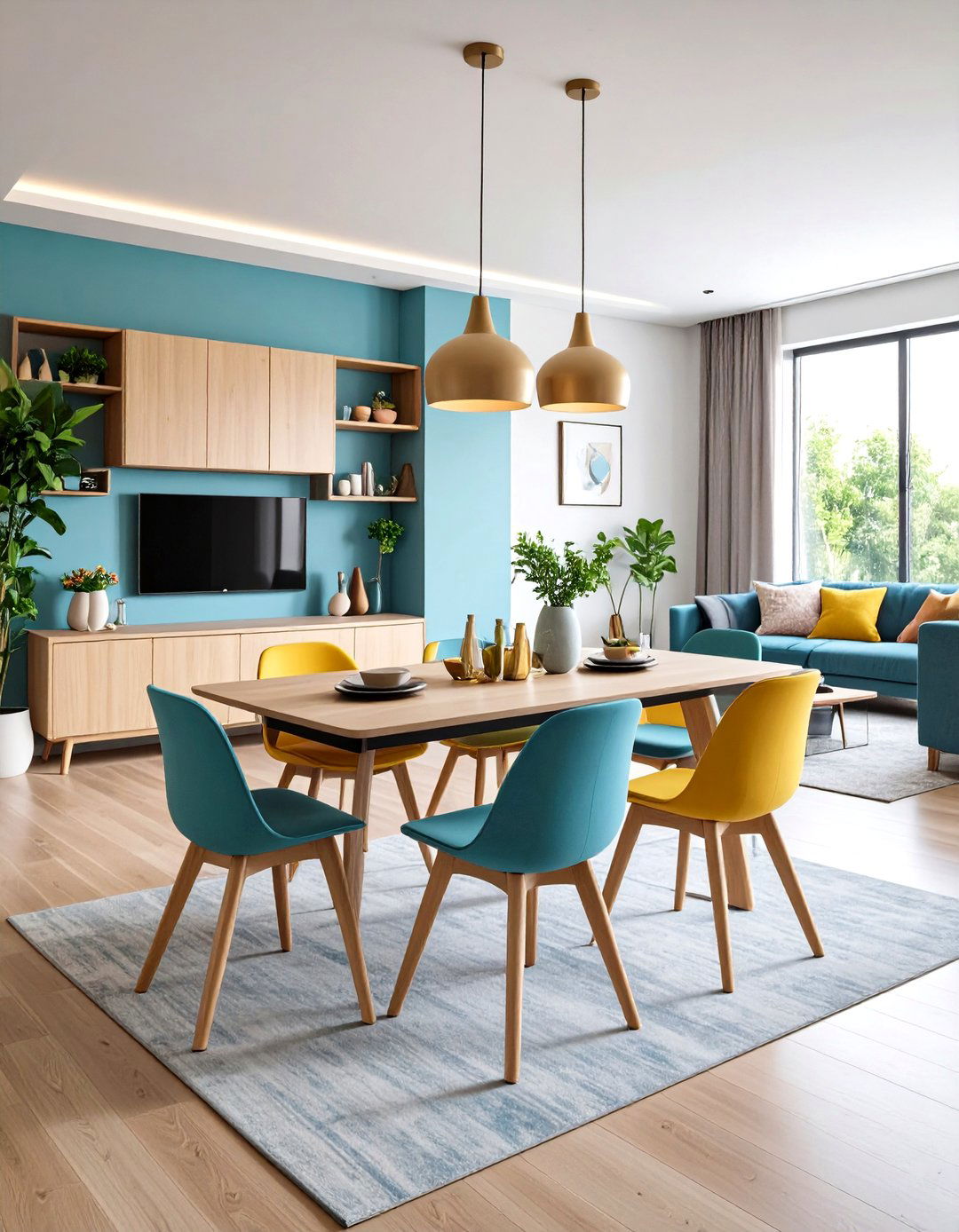
Nesting tables can spread apart to form a dining surface for two or three, then tuck away to only one side for occasional snack trays. Their modular nature allows usage as side tables during movie nights and quick dining tables when guests arrive. Look for sets with contrasting heights to create a dynamic tabletop composition and easy access from the sofa.
12. Sliding Panel Room Divider
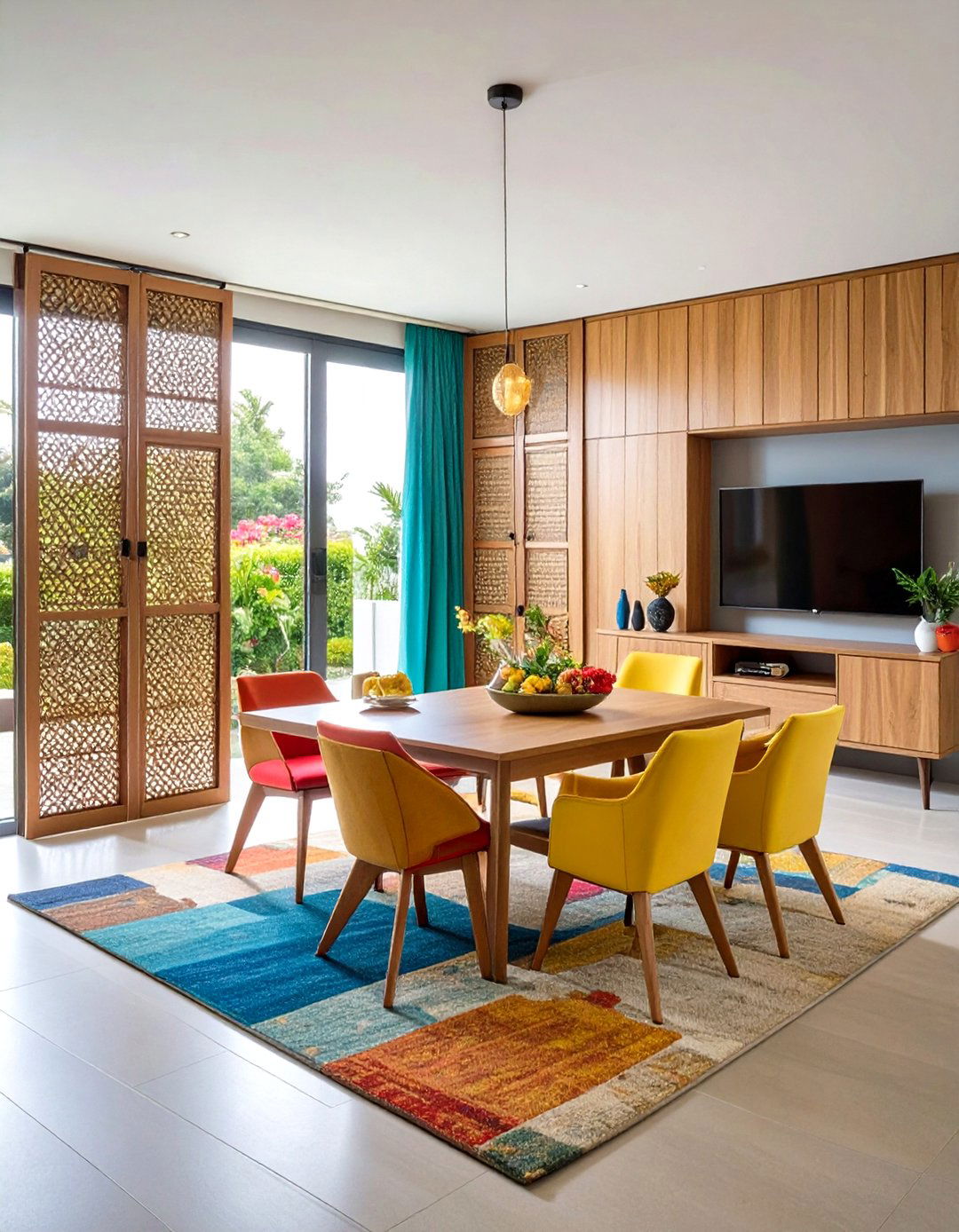
A sliding panel can separate the dining nook from the TV area when privacy or focused dining is desired. Use lightweight panels mounted on a ceiling track with decorative finishes—such as woven textures or painted wood—to add warmth and maintain flexibility. When panels are open, the room flows as one; when closed, they provide a sense of enclosure for mealtimes.
13. Floor-to-Ceiling Shelves for Display and Storage

Installing floor-to-ceiling shelves along one wall offers vertical storage for books, dishware, and decorative items. By anchoring the shelves near the TV, you create a media center with integrated dining-storage zones for plates and glassware. Adjustable shelving lets you accommodate taller vases or cookbooks, and using baskets keeps smaller items tidy and out of sight.
14. Folding Chairs That Stow Easily
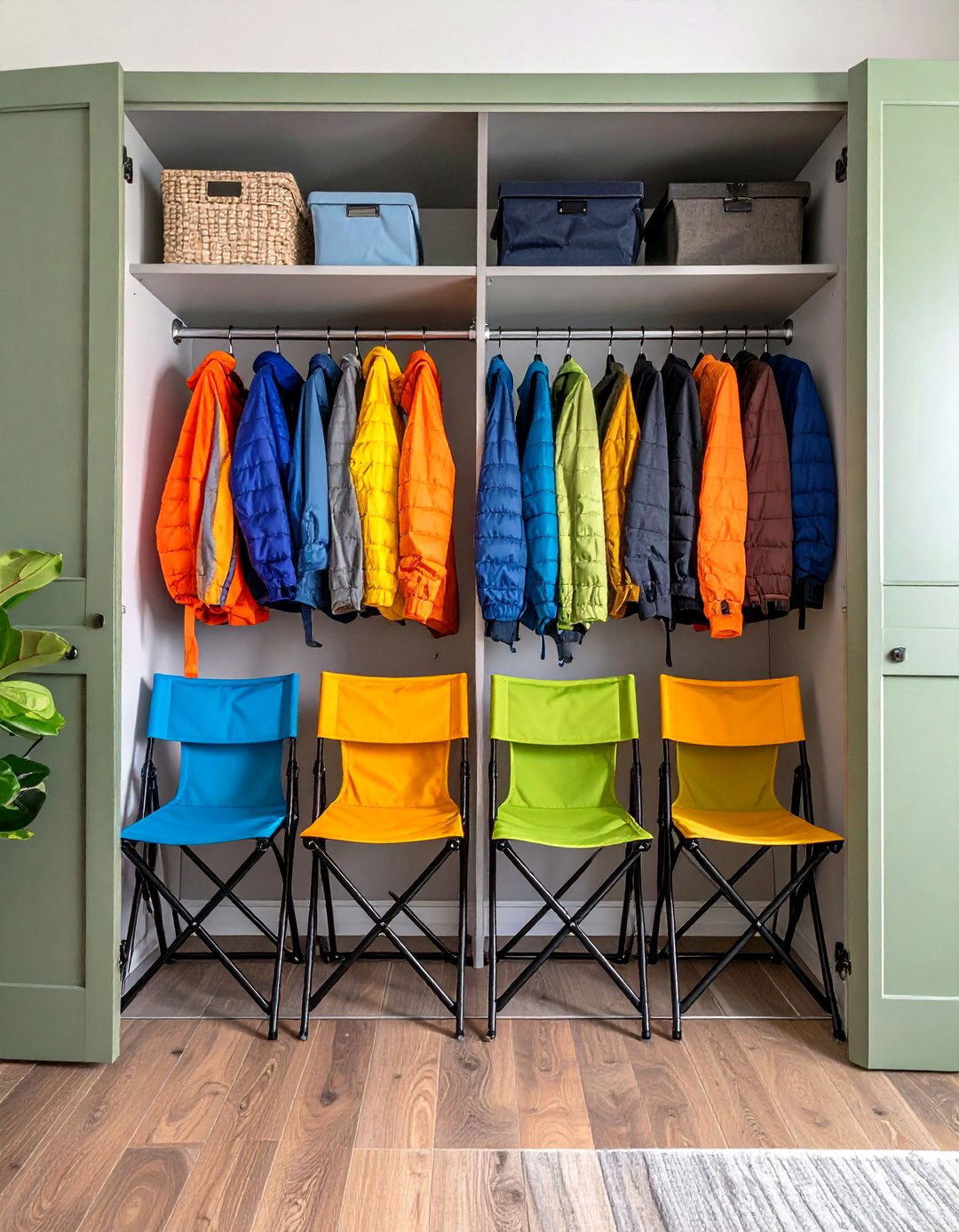
Slim folding chairs can be stored flat against a closet door or behind the sofa when dining seating isn’t needed. Their lightweight design allows them to be pulled out quickly for meals and stowed in seconds to clear pathways to the TV area. Choose models with padded seats or stylish frames to ensure comfort and visual appeal.
15. L-Shaped Sectional Facing TV and Dining Spot

An L-shaped sectional with one side oriented toward the TV and the other toward a small bistro table creates two functional vantage points. The corner seating serves as a natural divider, defining the dining niche on one side and the media lounge on the other. This configuration maximizes seating while keeping pathways clear and ensuring everyone has a good view of the screen.
16. Ceiling-Mounted Track Lighting to Zone Areas
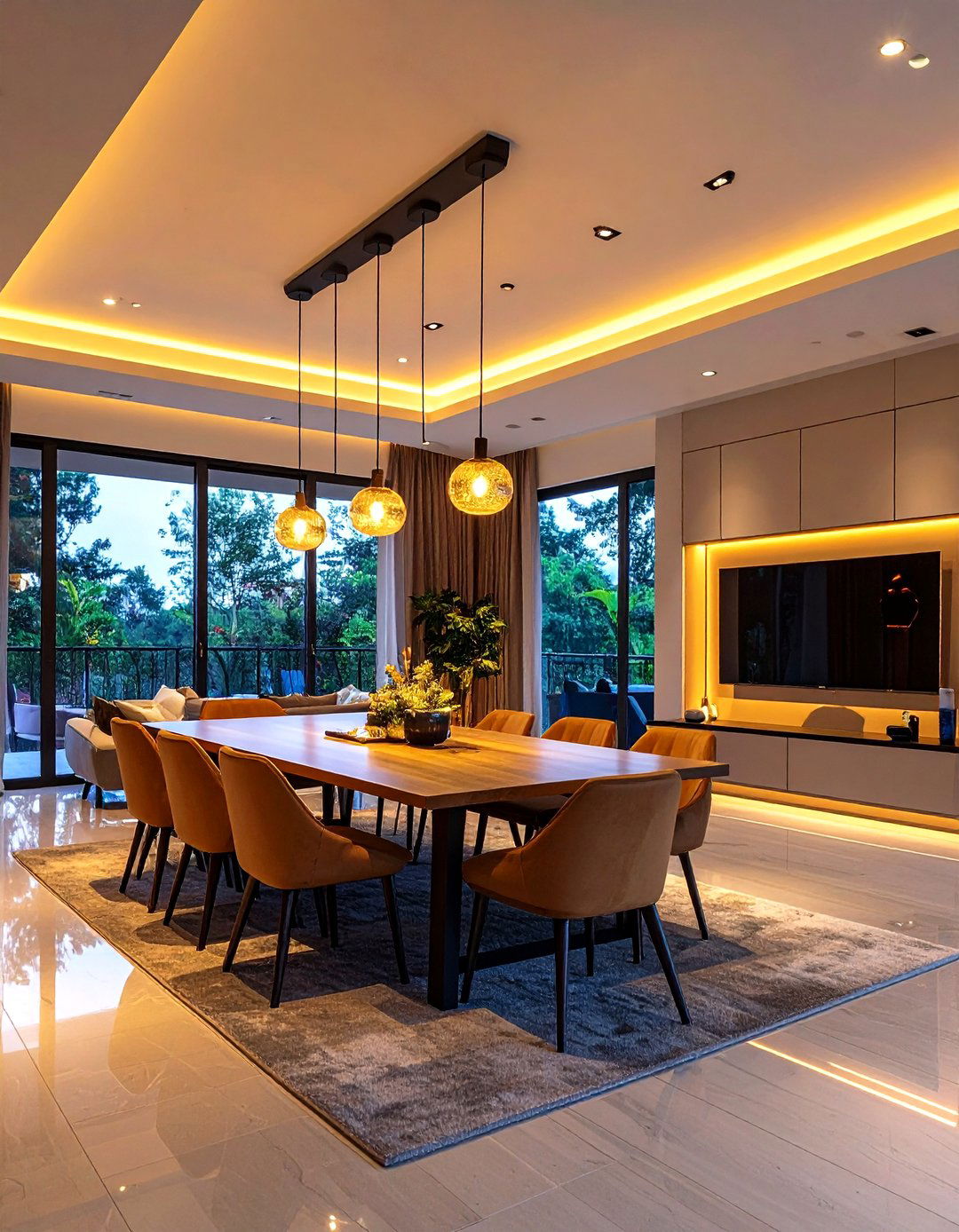
Install ceiling-mounted track lighting with adjustable heads to illuminate the dining table separately from the TV area. Position adjustable fixtures over the table for focused task lighting and direct softer uplighting toward the TV wall for ambient glow. This zoning technique visually delineates each function and enhances the room’s atmosphere during meals and movie nights.
17. Dual-Purpose Ottoman with Tray Top
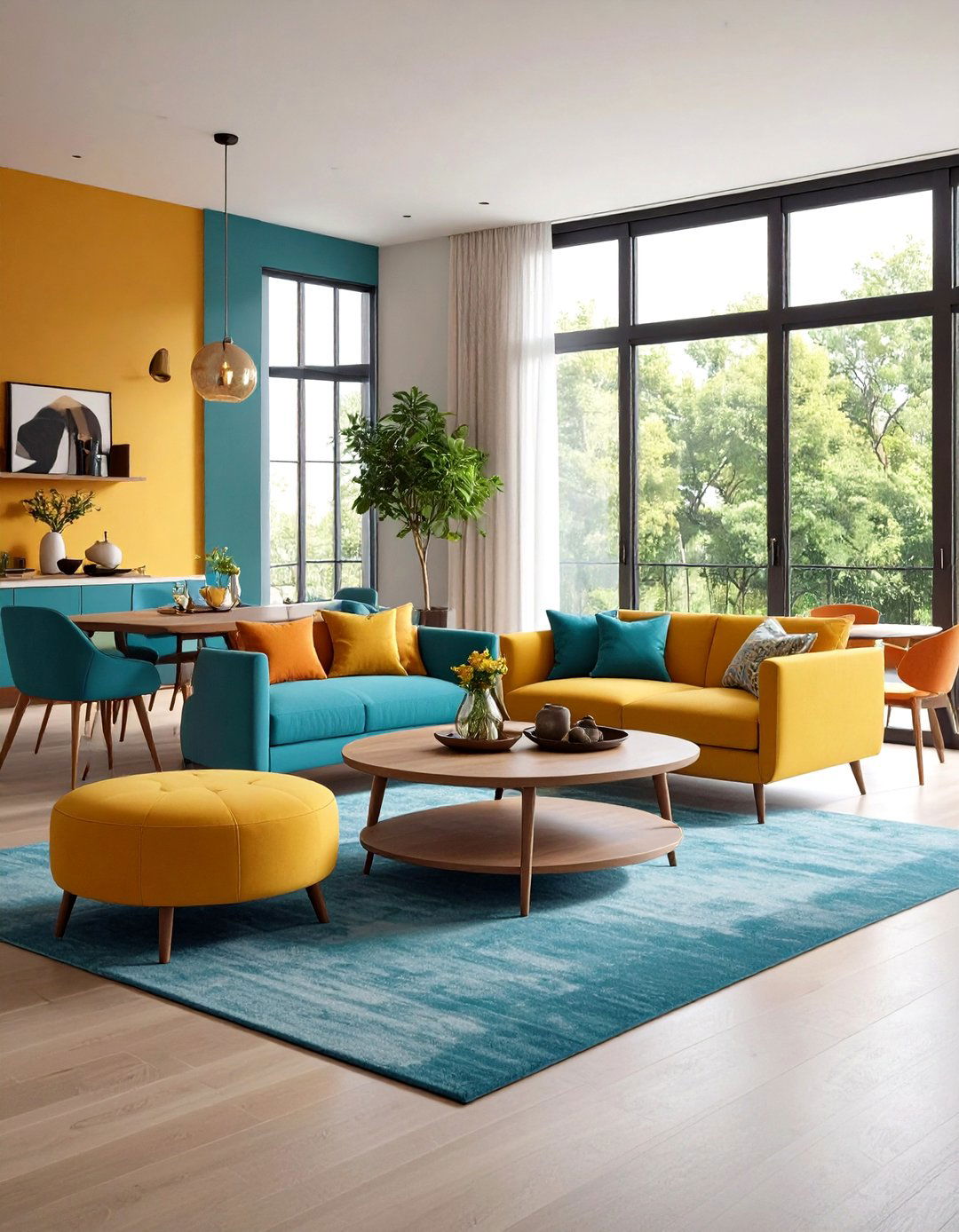
A large ottoman with a removable tray top serves as both a coffee table and an impromptu dining surface. The tray provides stability for plates and glasses, while the cushioned base offers extra seating around a small table when needed. Ottomans with hidden storage inside can house games, remotes, or table linens, keeping essentials within reach and out of sight.
18. Console Table Mounted at Counter Height
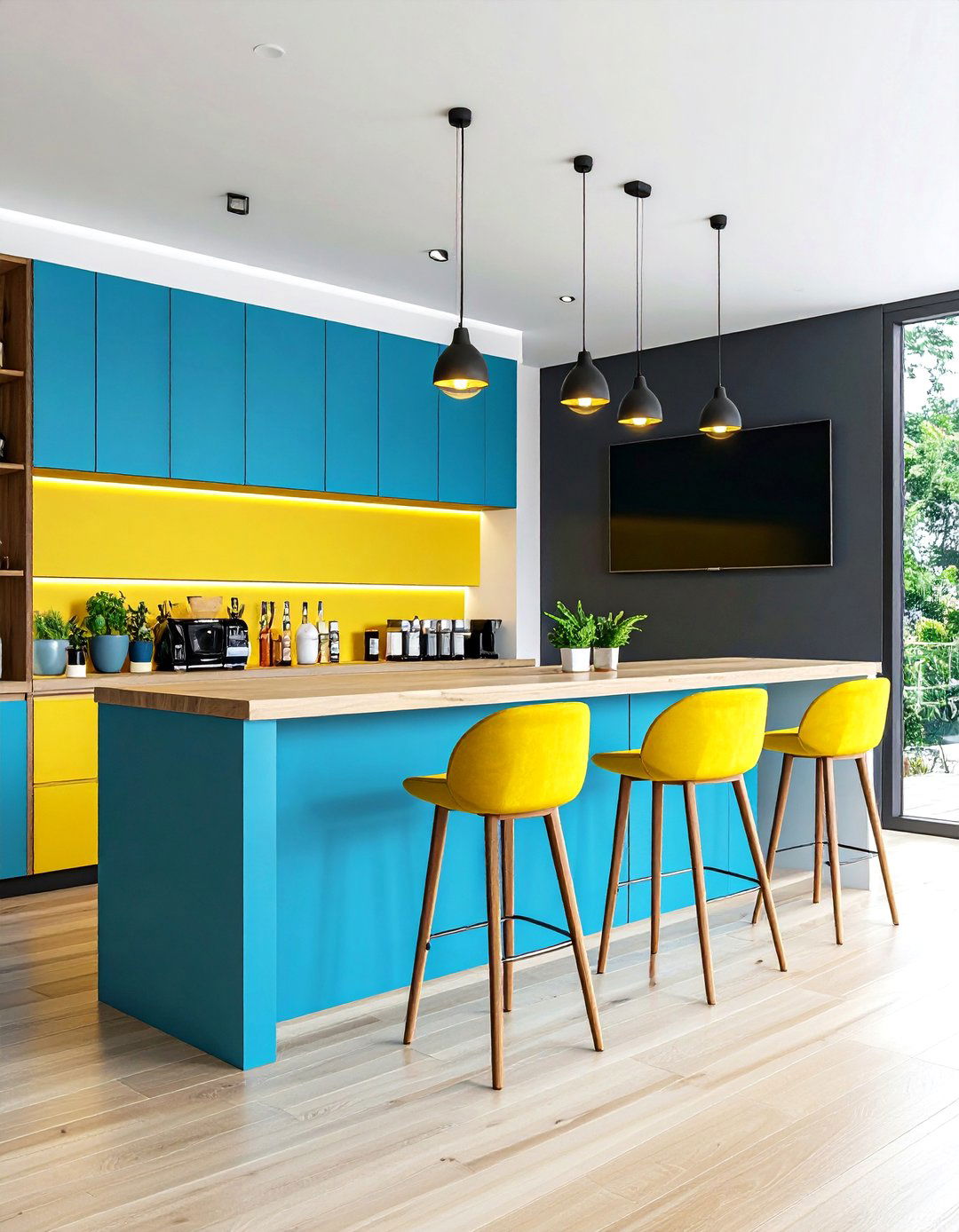
A narrow console table mounted at counter height can function as a bar-style dining surface facing the TV. Pair it with bar stools or counter-height chairs for a chic café vibe, and leave the back wall clear for a floating TV installation. Underneath, add baskets or small cabinets for additional storage of dining and media accessories.
19. Cohesive Monochromatic Color Scheme
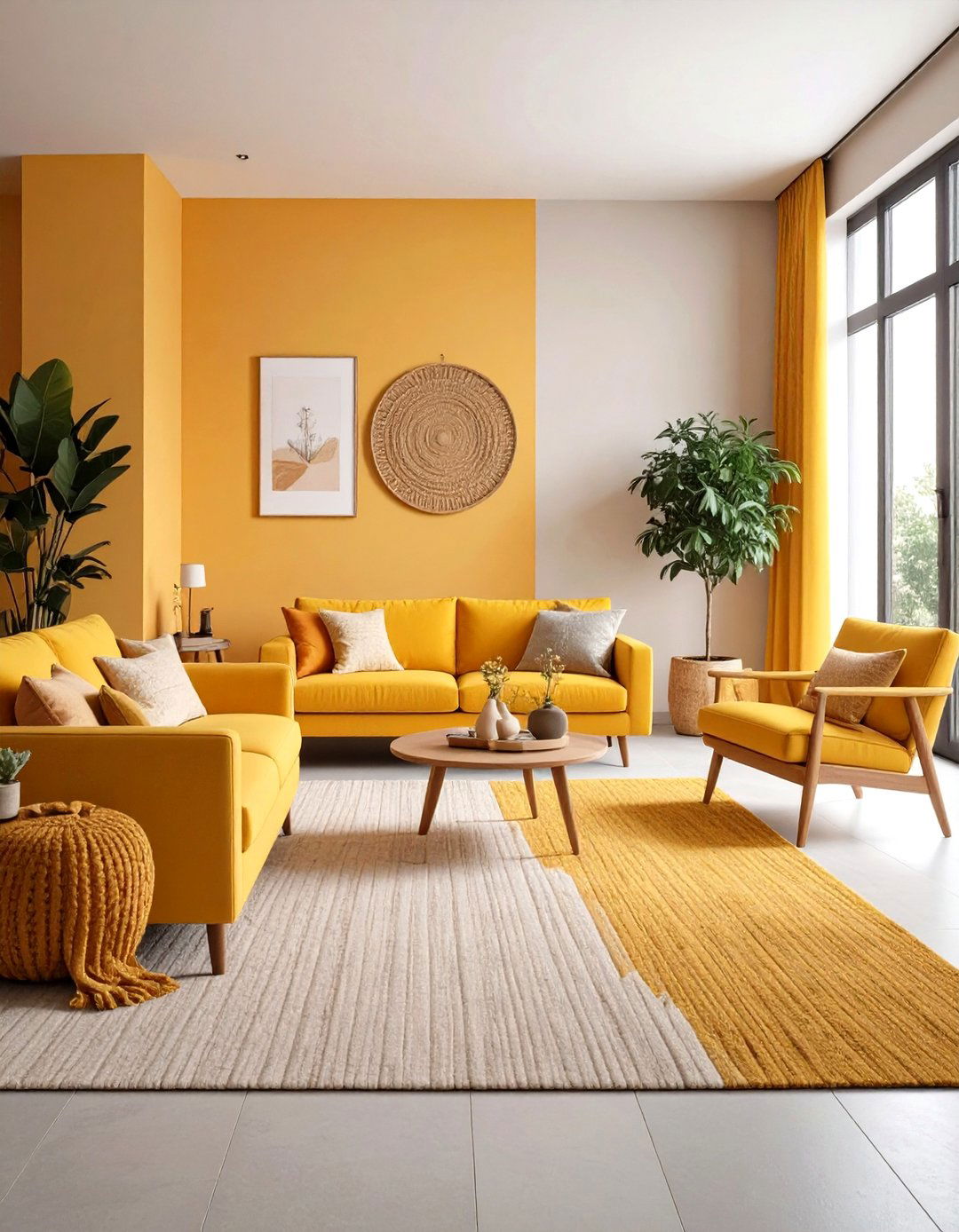
Employing a monochromatic color palette across furniture, rugs, and walls unifies the dining and TV areas into a harmonious whole. Varying textures—like matte paint, glossy tables, and plush fabrics—add depth without introducing new hues, helping the combined space feel larger and more serene. Accent pieces in metallic finishes or natural wood provide contrast and visual interest.
20. Nesting Stools Stored Under the Table
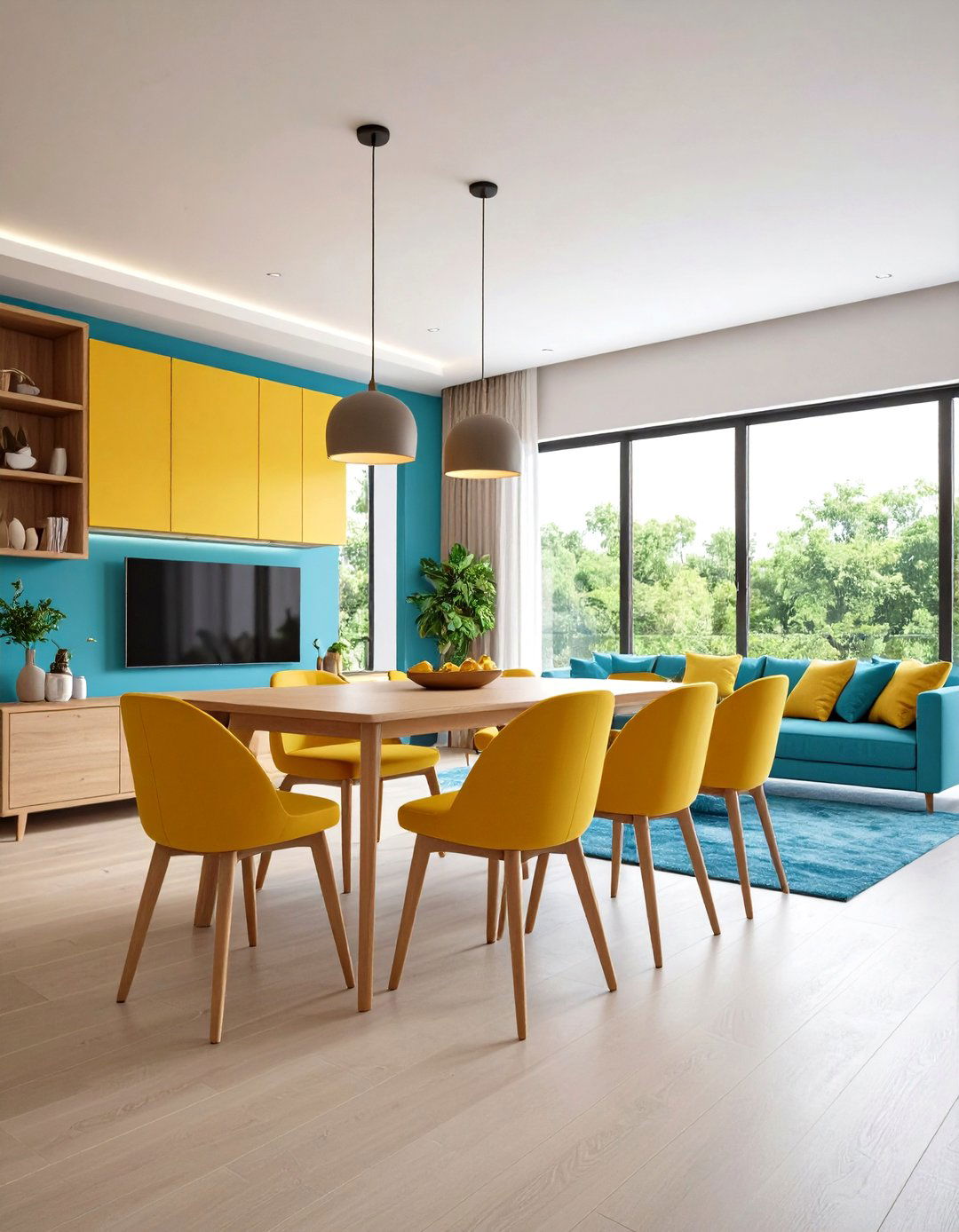
Compact nesting stools tuck neatly under a small dining table or console, remaining accessible yet out of sight. Pull them out as needed for extra seating around the TV ottoman or dining surface, then slide them back to maintain clear walkways. Their versatility makes them ideal for spontaneous gatherings without overcrowding the space.
Conclusion:
By combining multifunctional furniture, strategic zoning, and clever storage solutions, even the smallest living rooms can accommodate both a cozy TV lounge and a stylish dining area. Whether through fold-down tables, modular sofas, or transparent surfaces, these ideas demonstrate how thoughtful design maximizes utility without compromising aesthetics, ensuring your space remains inviting and efficient.


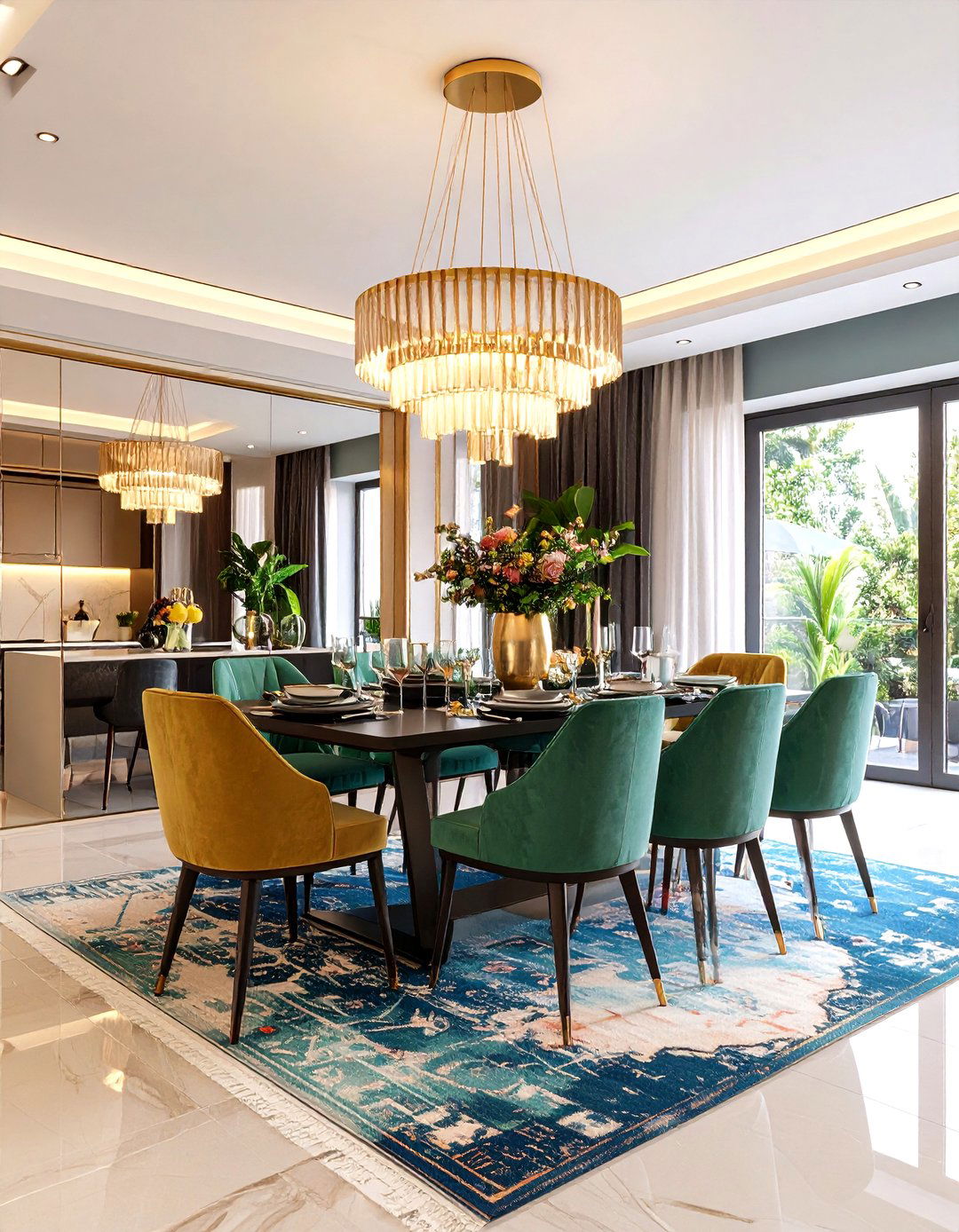
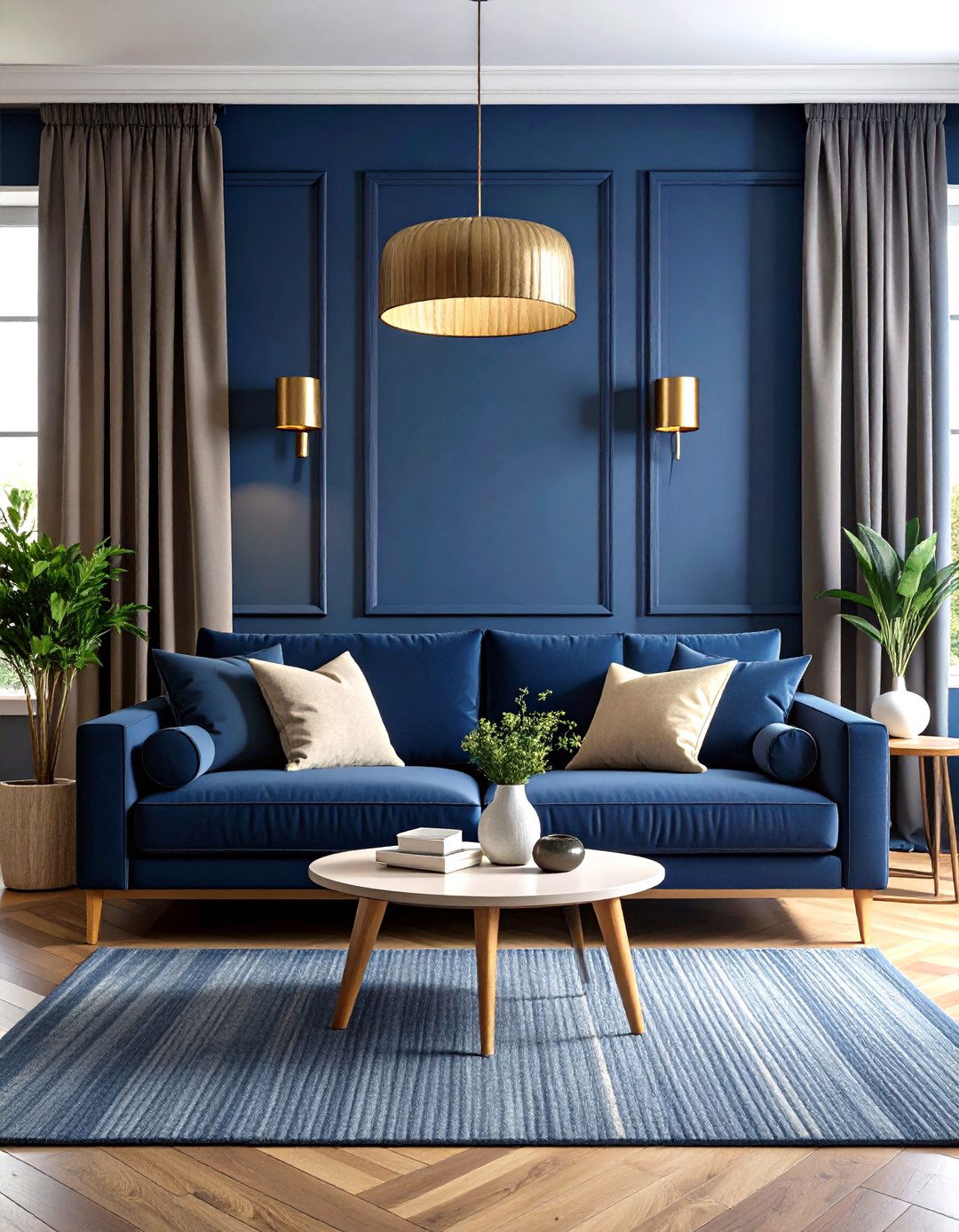
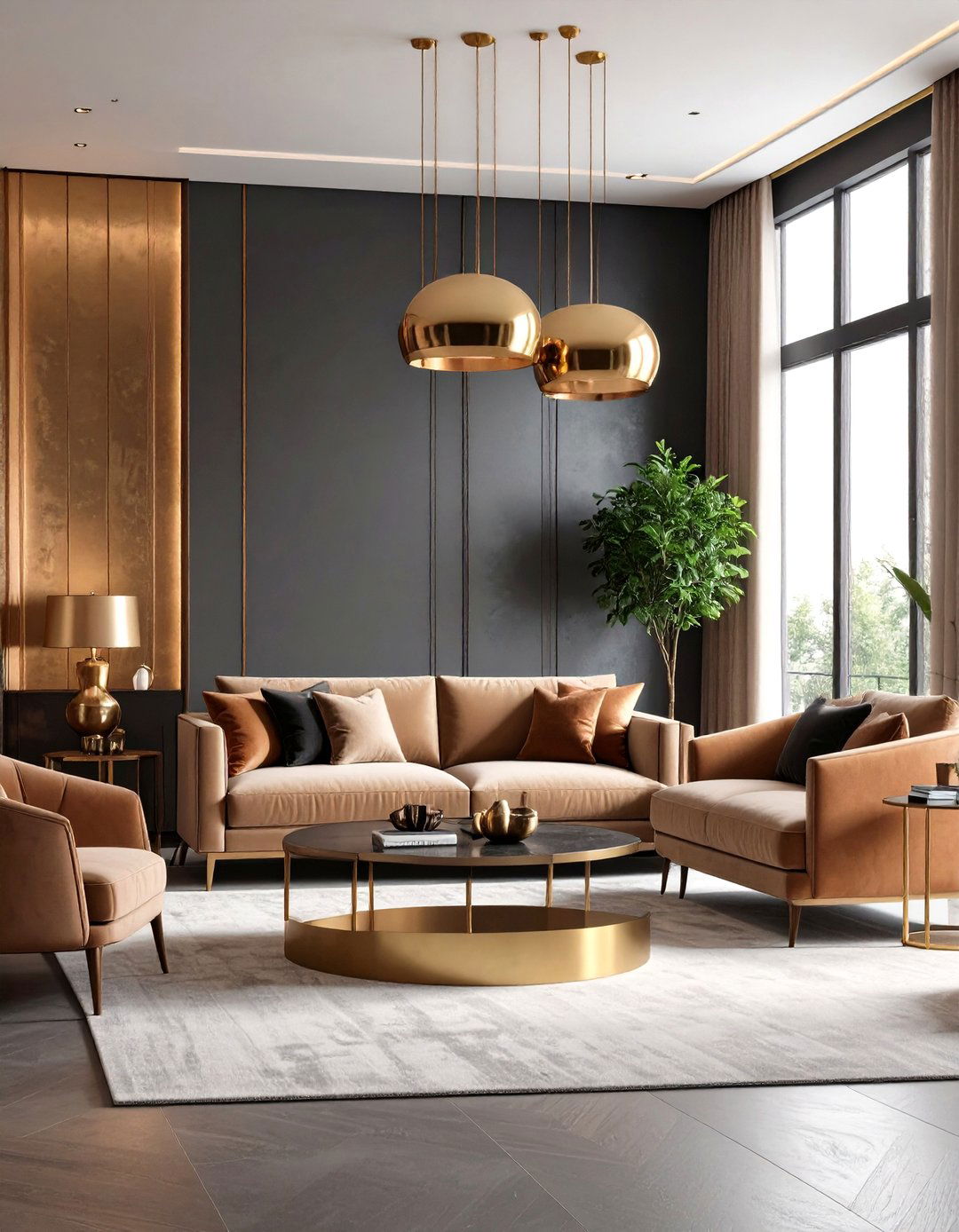
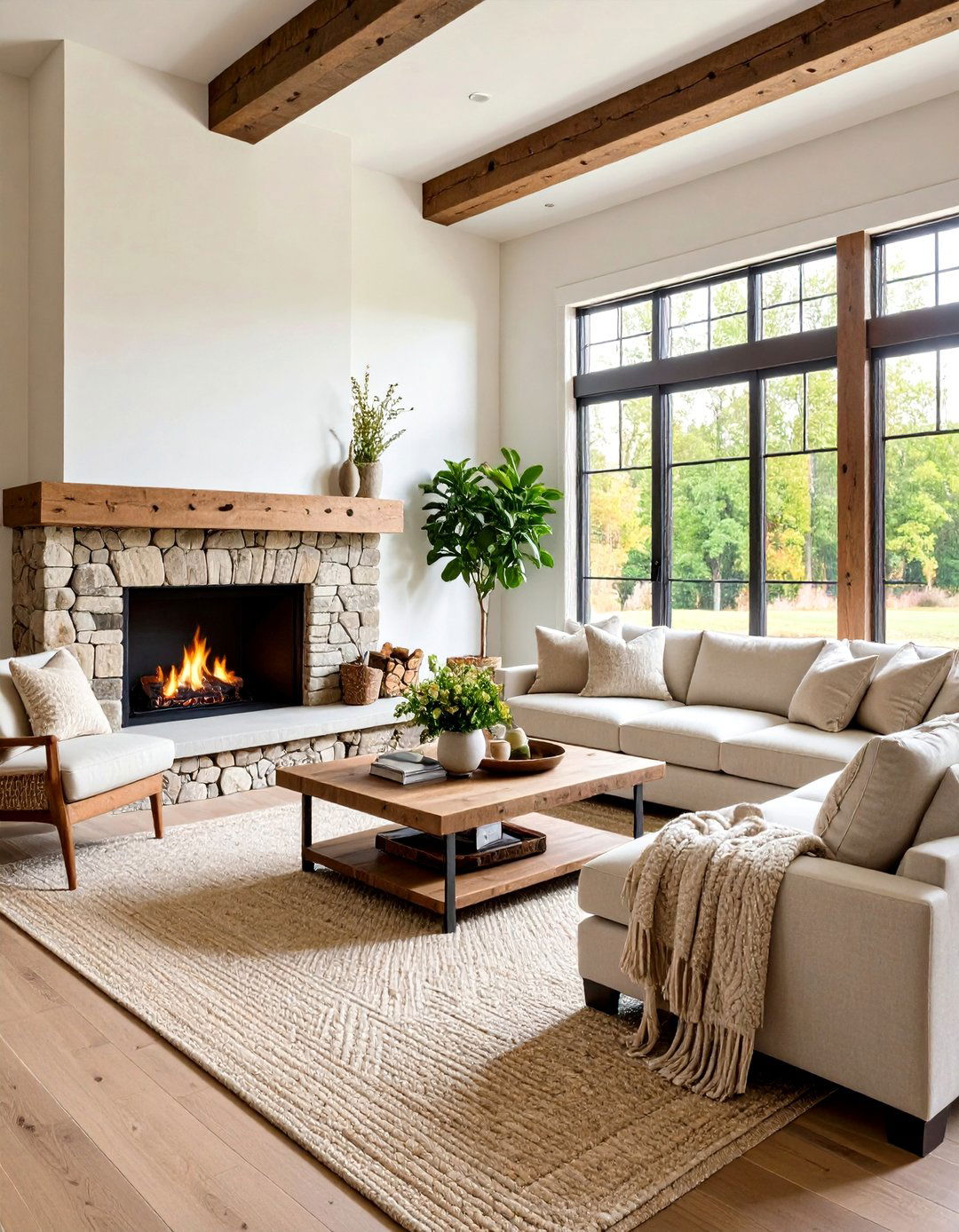

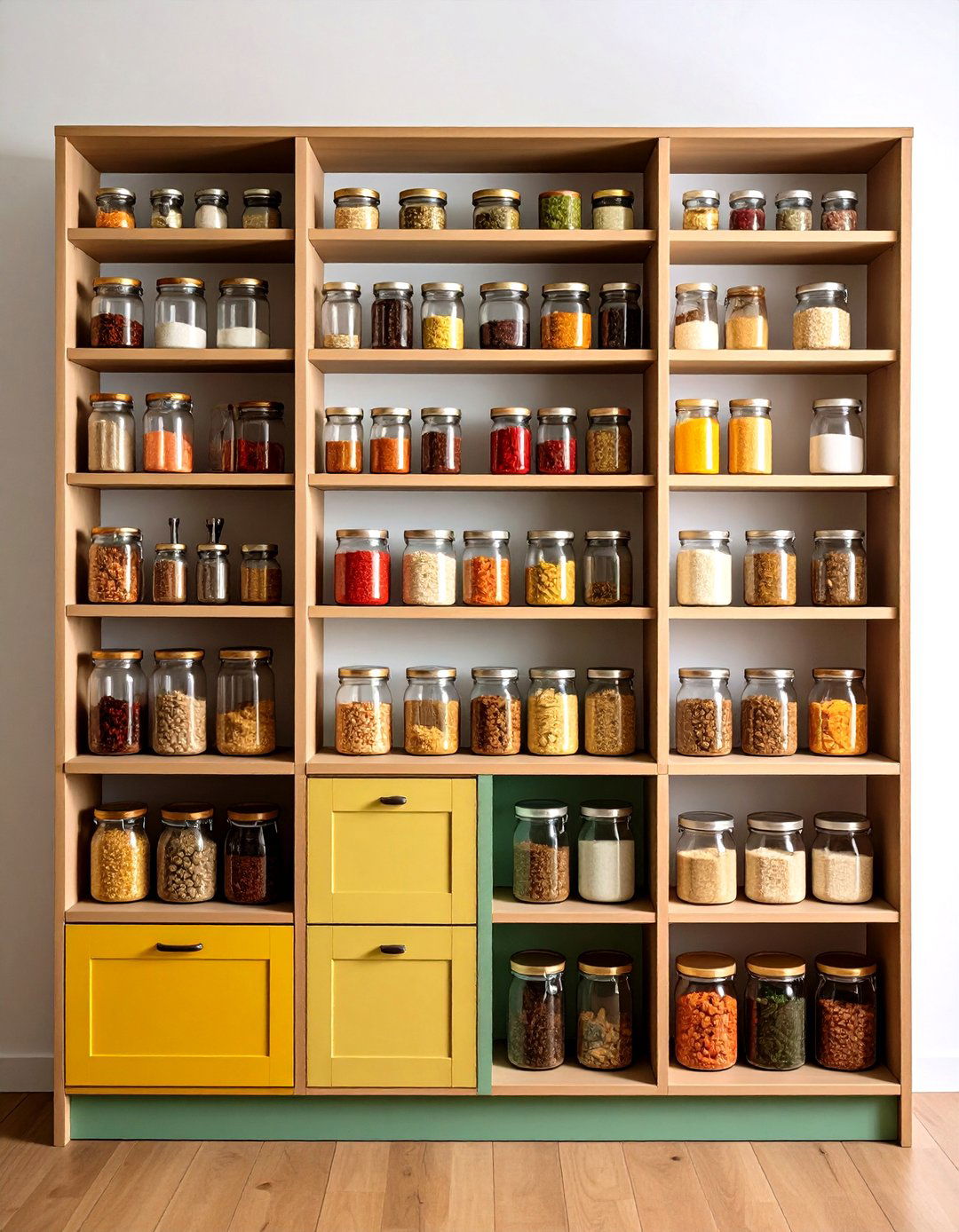

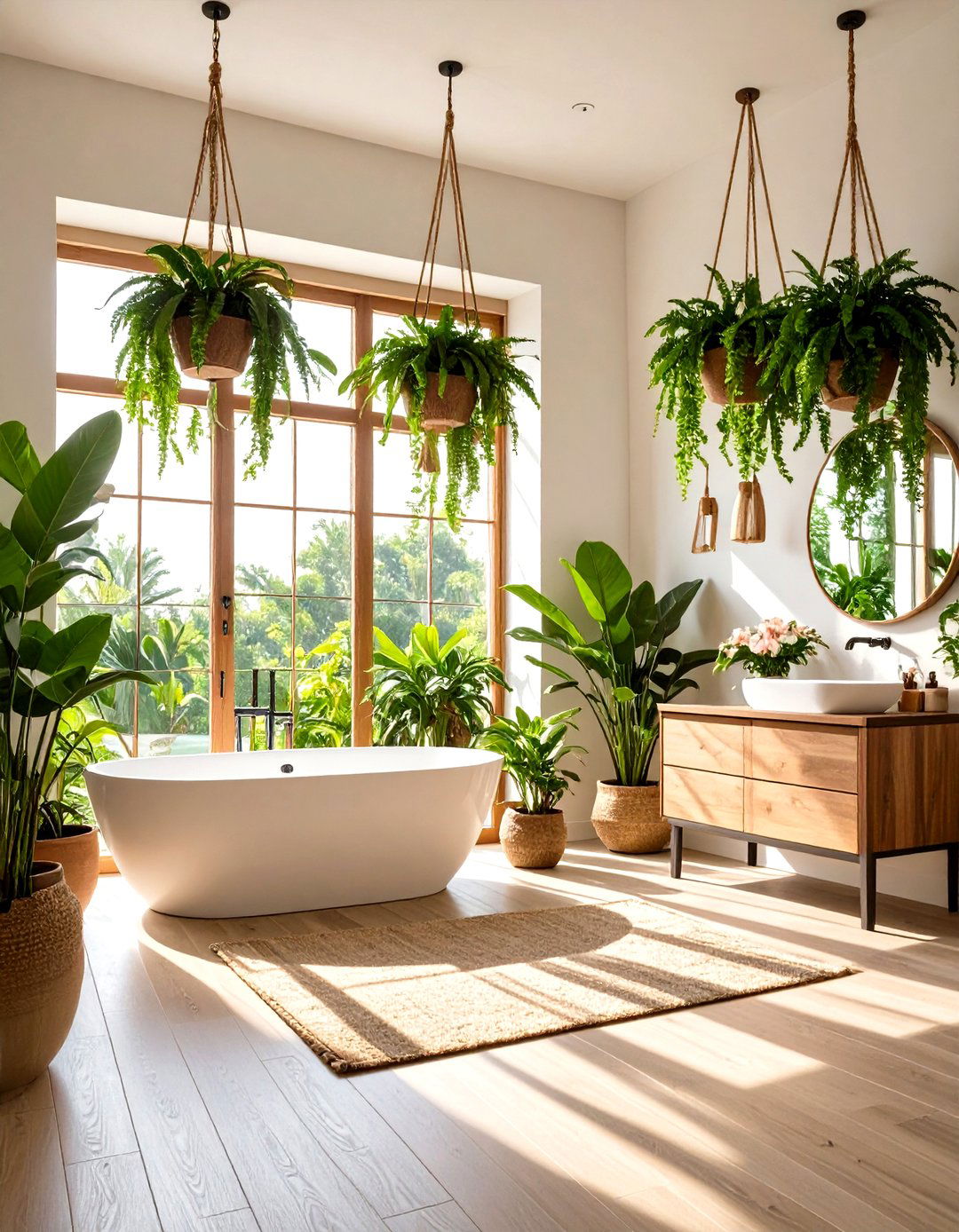
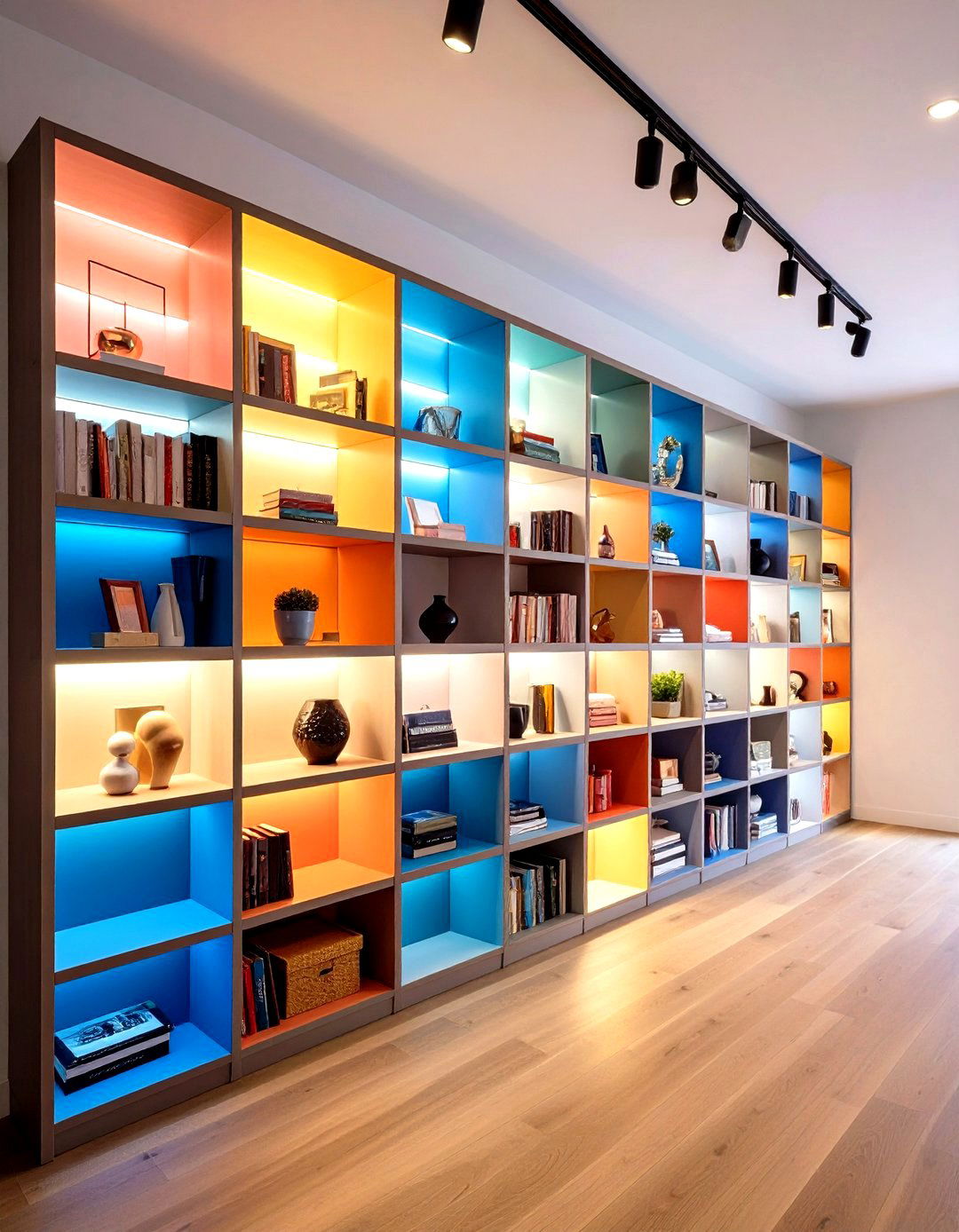
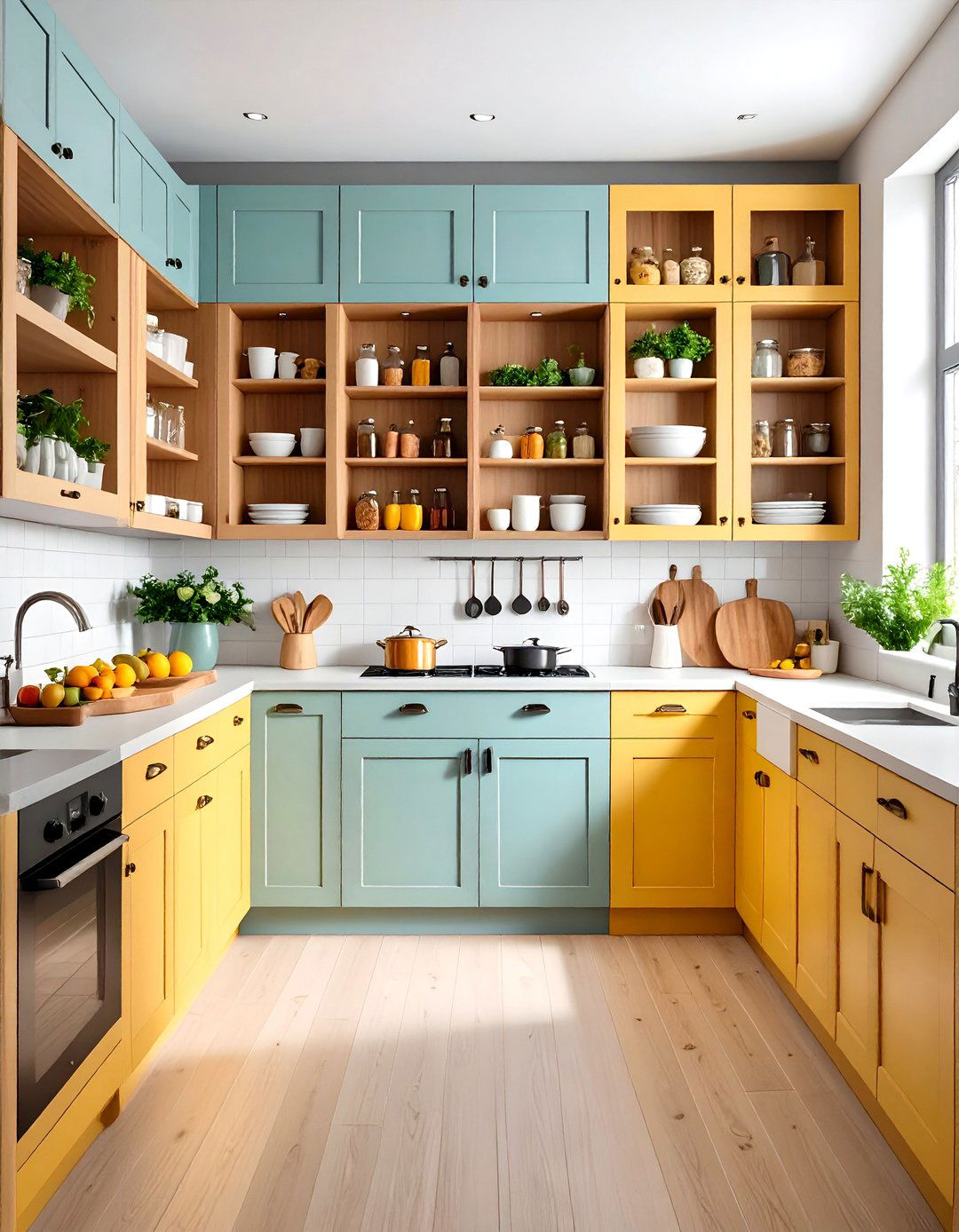
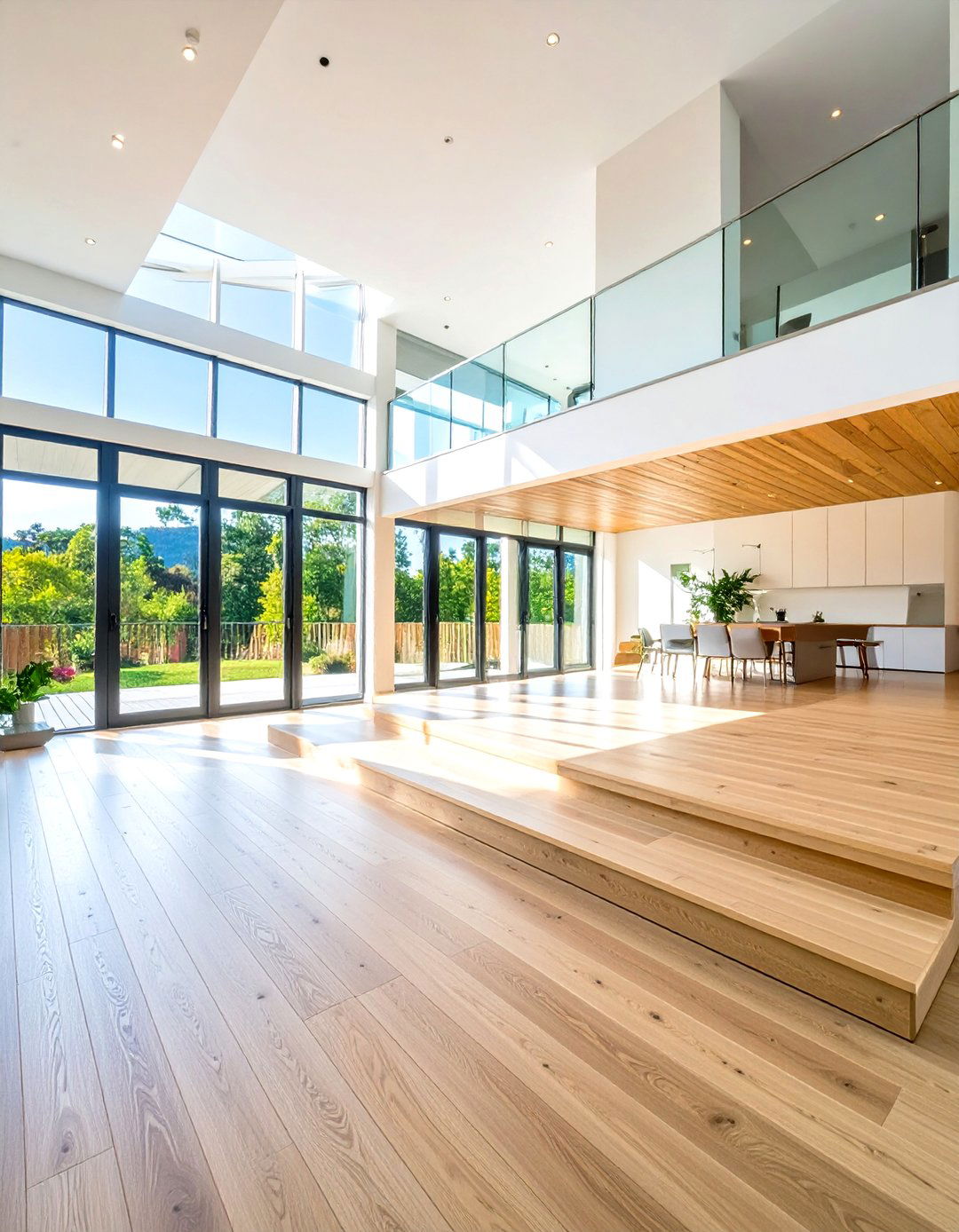

Leave a Reply